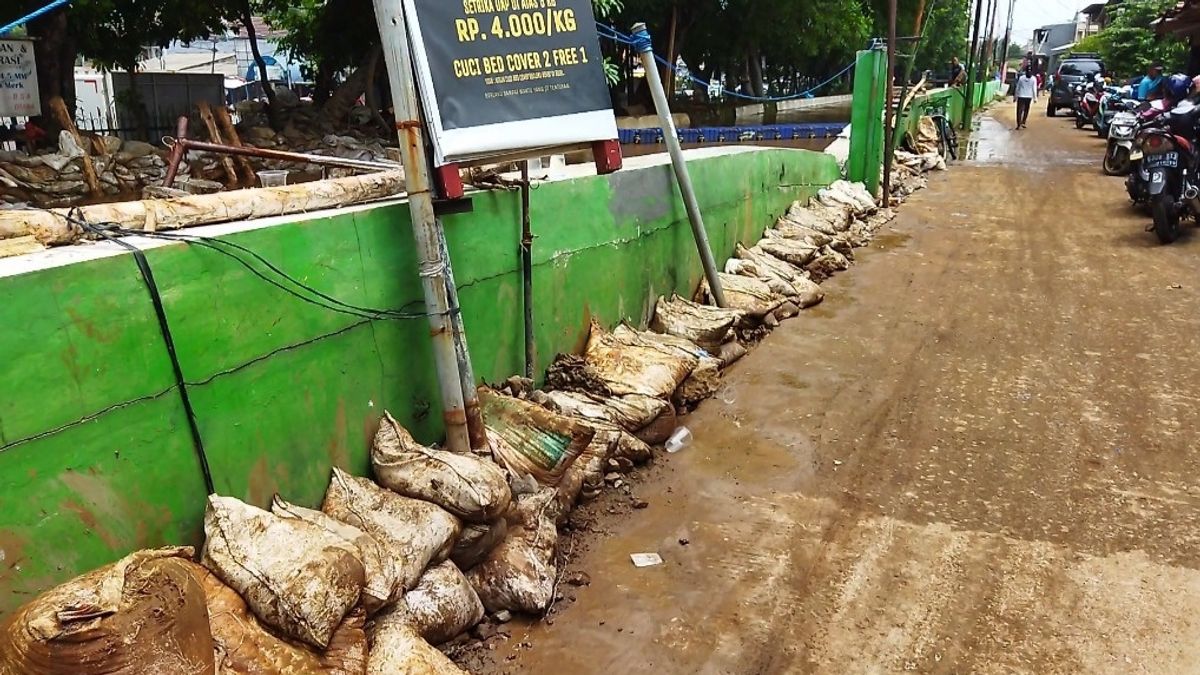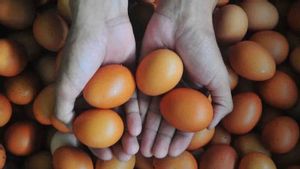JAKARTA – The Kali Baru plaster on Jalan Rahayu, Kramat Jati, East Jakarta, which had been broken, was finally repaired by the East Jakarta City Government. The repairs were carried out considering the condition of the sheet pile which was already very alarming, as well as the water capacity which residents feared would cause flooding.
The Head of Kramat Jati Sub-district, Rudy Syahrul, said that the repair of the broken sheeting used dolken cones, gabions and sandbags.
"We are still in the process of repairing the field by installing river stone gabions and sandbags," said Rudy Syahrul in Jakarta, Friday, November 12.
Rudy said, it is difficult to do a total repair by rebuilding the sheet pile in the near future because during the rainy season the water flow of Kali Baru often rises.
"The Kali Baru flow is managed by the DKI Jakarta Provincial Government, the East Jakarta Natural Resources Sub-Department and the SDA Satpel in Kramat Jati District," said Rudy.
Rudy explained, the installation of cerucuk or dolken wood and gabions filled with river stones were installed on the inside of the Kali Baru stream to prevent the sinking points from increasing due to the impact of water pressure.
Meanwhile, sandbags are installed on the outside or the side of the road in the residential area of Central Village, which functions as a barrier so that water does not come out of the cracked sheet pile.
Previously, it was reported that the plaster on the right and left sides of the Kalibaru channel connecting the Ciliwung River on Jalan Rahayu, RT 10/10, Kampung Tengah Village, Kramat Jati District, East Jakarta was found broken and collapsed.
The channel sheet pile on the right side bordering Jalan Raya Bogor was found to be five meters long. The plaster was then installed with an emergency embankment using sacks filled with soil and dolken wood. Although it can hold water from the Kalibaru channel, the seepage of water from the pile of sacks still spills onto Jalan Raya Bogor.
Meanwhile, on the left side of the Kalibaru water channel, it was found that it had collapsed for approximately 15 meters. By local residents, the plaster that collapsed at the bottom of the canal wall was installed as a barrier using a pile of sacks filled with soil.
Nemih (61), the head of RT 010/01, said that the broken plaster embankments were located in RT 09, 10, 04 and 03 in RW 01.
"The plaster is damaged in RT 03, it's seepage from the river. The pile in RT 02 has collapsed. It has been broken for a long time, but it hasn't been repaired because the situation is still like this. This time the flood has exceeded, overflowed," he said when VOI met at the location Monday November 8th.
The English, Chinese, Japanese, Arabic, and French versions are automatically generated by the AI. So there may still be inaccuracies in translating, please always see Indonesian as our main language. (system supported by DigitalSiber.id)













